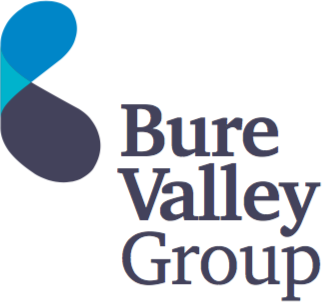Bure Valley Group is an investment brokerage business which links successful investors with exciting, innovative UK startups seeking funding. This content is for information purposes only and should not be taken as financial or investment advice.
Investment risk and return are, of course, typically linked. Generally, more of the latter usually entails more of the former, and vice versa. Yet the most constructive way to regard investment risk is to look at it in terms of the likelihood of capital loss (or “underperformance”) occurring, and whether this risk is higher than an established, average benchmark. The upside is that whilst high-risk investments might offer a greater likelihood of capital loss when compared to this benchmark, they also offer additional opportunities to generate stronger investment returns compared to those which are closer to the “average risk” benchmark.
Here at Bure Valley Group, we offer a range of investment opportunities which may be classed as “higher risk” but which also present routes to potential significant capital growth. In this short guide, our investment team outlines how these types of investments work and offer some ideas for investors looking to include these within their portfolio. To find out more about our EIS and other investment opportunities, visit our portfolio page here. To enquire about our latest projects and funding, you can reach us via:
+44 160 334 0827
Examples of high-risk investments
Not all high-risk investments are classed as “alternative investments” (i.e. low-liquidity, limited past performance data and not correlated with traditional investments such as bonds) – although many of them are. Here is a brief summary of many common investments which are typically classed as “high-risk”:
- Cryptocurrencies. Digitally-based currencies which are not dependent on any central bank. Volatile cryptocurrency markets can offer the route to high investment growth.
- Hedge funds. A type of investment fund which usually performs complex trades (e.g. short selling) of liquid assets on behalf of its investors.
- Structured products. With these types of products, your investment return is based more upon the degree to which the investment meets certain rules/criteria – rather than whether or not the assets gain/lose value. Examples include guaranteed capital plans and protected investment funds. Some of these products focus on providing investors with an income whilst others are geared more towards capital growth.
- Angel investing. Here, a wealthy and successful individual provides investment to a start-up company in return for a stake in the business, or convertible debt.
- Venture capital. Private equity is used (e.g. via venture capital firms) to provide finance to higher-risk, emerging companies or startups which are regarded as having high potential for investment growth.
- Leveraged ETFs. Here, tools such as financial derivatives and debt are used to increase how much a market index returns (e.g. the Nasdaq or FTSE 100).
- Unregulated collective investment schemes (UCIS). These funds usually focus on “exotic” investment opportunities not regulated by the Financial Conduct Authority (FCA) such as overseas forests and plantations.
- Penny stocks. Sometimes known as OTC stocks, nano-cap or small cap stocks, less than one dollar is used to buy a share in a small public company.
- Spread betting. This is a form of investor speculation on different financial markets such as forex, commodities and shares. The return is based on how accurate your wager was instead of a complete win/lose outcome.
Balancing returns with risks
There tends to be a positive correlation (although no direct relationship) between risk and the opportunity for return. In other words, if you want the chance to generate a high investment return within a short space of time, then you will likely need to accept a higher risk level.
Here, it’s important for investors to exercise wisdom and self-discipline. It’s easy to succumb to investor biases which can lead to costly losses later such as overconfidence, recency bias and anchoring. An experienced financial adviser or investment team can help you to take regular “steps back” to review your portfolio and check these biases. Appropriate diversification will be important to implement, as well as sensible calculations on your return on investment (ROI). This can be expressed by a simple formula:
ROI = (Your End Position – Your Starting Position) / Your Starting Position
A note on high-risk investments
It’s important to state that there’s nothing inherently wrong, better or suspicious about high-risk investments. They’re simply a different type of investment which may or may not be suitable for an investor depending on your investment risk appetite, your goals and investment horizon. They offer the opportunity to “win big” if things go to plan; yet you stand a higher chance of losing some or all of your initial investment capital.
One effective way to mitigate this risk is to use an experienced investment broker (such as ourselves here at Bure Valley Group!) to access a set of pre-vetted companies. Here, the business models have been thoroughly “stress-tested” to help ensure their viability for long term success and strong investment returns. Of course, this does not guarantee success but it can significantly improve the fundamentals profiles underpinning the higher-risk investments within your wider portfolio.
Invitation
If you are a successful investor looking for EIS investment opportunities or if you are a business owner looking for funding, then we’d love to hear from you.
Get in touch today to start a conversation with our team, and discuss some of the great investment memorandums we have available:
+44 160 334 0827

